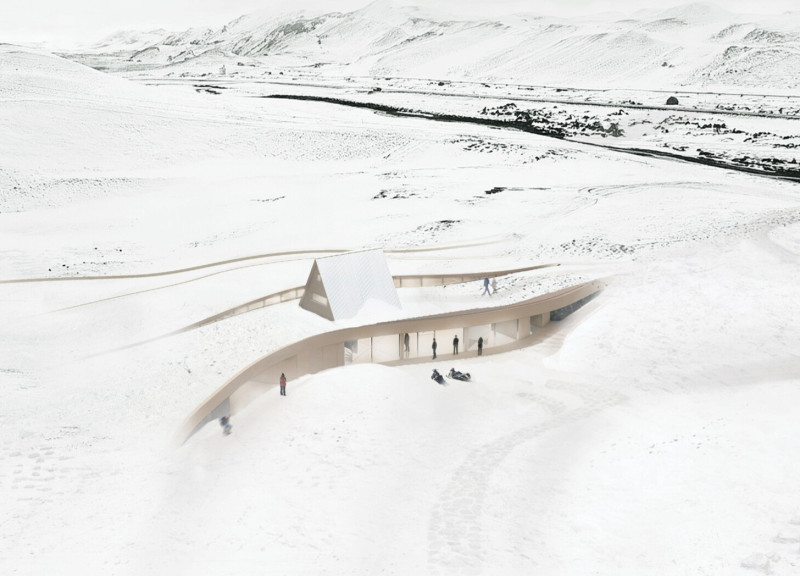5 key facts about this project
At the core of the project is a design ethos that prioritizes sustainability and user experience. The architects have integrated natural materials such as concrete, glass, wood, and steel, chosen for their durability and environmental performance. Concrete serves as the fundamental structural element, offering robustness, while expanses of glass facilitate a seamless transition between indoor and outdoor spaces, allowing natural light to flood the interiors. The use of wood as a cladding material not only enhances the thermal performance of the building but also imbues the design with a sense of warmth and accessibility.
Key aspects of the architecture include careful attention to spatial organization, where various functional zones are thoughtfully arranged to optimize flow and interaction. For instance, the layout features [describe specific rooms or areas, e.g., open-plan communal areas, private rooms, flexible workspaces], each designed to promote collaboration and community engagement. The design embraces an open layout that encourages movement and interaction, breaking down traditional barriers typically found in similar facilities. This creates an inviting atmosphere that is crucial for fostering social connections among users.
Unique design approaches are evident throughout the project, particularly in its roof structure and exterior features. The roof has been designed as a [describe any unique design characteristic, e.g., green roof, cantilevered design], which not only provides aesthetic interest but also serves practical purposes, such as rainwater collection or thermal regulation. Furthermore, the incorporation of biophilic elements, such as interior gardens or landscape terraces, reflects a broader commitment to sustainability and mental well-being, aligning with modern architectural ideals that emphasize the importance of nature in built environments.
The project integrates cutting-edge technology to enhance its functionality and efficiency. Smart building systems for energy management, humidity control, and lighting contribute to a more sustainable and comfortable experience for users. These technological features are seamlessly woven into the fabric of the design, supporting the overall vision without compromising aesthetic integrity.
The overall architectural expression encapsulates a contemporary interpretation of [mention any local architectural style or cultural influences], resulting in a design that feels both relevant and contextual. This thoughtful approach resonates with the local community, as the building not only serves its intended purpose but also acts as a landmark that reflects the identity and spirit of [Geographical Location].
Exterior materials and thoughtful landscaping further complement the design, creating a layered experience both visually and spatially. The choice of durable, low-maintenance materials ensures that the project remains resilient over time while contributing to the environmental goals set forth at its inception.
For those interested in delving deeper into the specific aspects of this architectural endeavor, exploring the architectural plans, sections, and design details will illuminate the meticulous thought process behind each element. This project is not just a series of walls and roofs; it is a considered response to its context, encouraging engagement and interaction while addressing the practical needs of its users. [Architect/Studio Name] invites readers to further investigate the project presentation to gain a full appreciation of the architectural ideas realized within this significant design.


 Aleksandra Maria Bator,
Aleksandra Maria Bator,  Diana Franciszka Janiczek,
Diana Franciszka Janiczek,  Grzegorz Jerzy Konieczny
Grzegorz Jerzy Konieczny 























